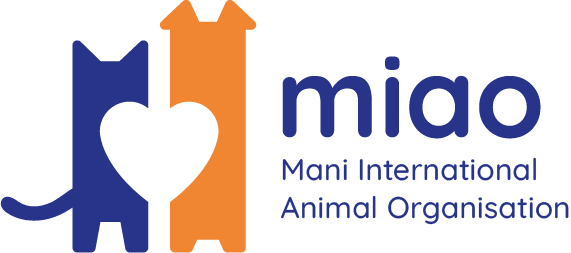A phone call, yesterday: Baby kitten found abandoned, can you take care of it?
Yes, we can. We picked up the kitten found alone at a construction site and took a close look at it. She was only three weeks old, had a very bad cat cold, one eye was so badly injured that it could not be saved, and the other eye was badly glued shut. She is probably in terrible pain because of the eye injury. The vet looks at the little creature and tells us that the kitten is too small for surgery yet. She can’t give it any painkillers either, because at this tender age the dosage is very difficult and the risk of kidney damage is quite high. We could feed it and probably keep it alive, but it would continue to suffer with its huge swollen blind eye until it was big enough to think about an operation to remove the blind eye. After a round call in the active group, the decision is taken to put the tiny kitten to sleep. With he help of the vet we put an end to its suffering.
Unfortunately, not all animals that end up with us can be rescued.
In situations like this, we animal welfare workers reach our limits. Not all animals that end up with us can be saved. In our understanding, protecting animals also means protecting animals from too much suffering. This applies just as much to the stray dog found hit by a car, whose X-rays show that his spine is broken and his nerves are so badly damaged that he will never be able to walk again, and that he will have no control over his excrements. He too is allowed to go, sent to dog heaven. We never take such decisions lightly, they are always supported by the group and of course after consultation with the vet. Fortunately, they are not often necessary, but when they are, we stand by them. Because protecting animals also includes sparing them suffering.
Most activities, however, lead to a happy ending.
Most of the time, however, our activities have a happy ending. When we take stock, we are surprised every year how many dogs have found a home through our intervention. There are more than 40 every year, sometimes even more than 50 or 60. With every photo of a dog being embraced by happy ‘parents’ upon arrival, we cheer with joy. Another soul saved, and once again all our efforts have paid off. These efforts are mostly not visible, because working directly with the dog is actually the least of it. Of course, every new arrival has to go to the vet, is vaccinated, chipped, cleaned of parasites and, if old enough, also spayed/neutered.
Of course, each new arrival is individually cared for, well fed, lovingly treated and taken for a walk at least once a day. All this helps us to get to know our fosterlings well, describe them with their individual characteristics and find them a home. Pictures and descriptions are published on social media, without which we would hardly be so successful. And then the work behind the scenes begins: Often it takes countless phone calls with interested parties until we are sure that the chemistry between dog and owner will be right. Next is the question of how the new family member will travel to its new home. We look for flight sponsors, or overland transport is considered. Mostly, the dog has to be driven to the airport in Athens, often in the middle of the night… Afterwards, we are overjoyed when pictures and reports show that we have once again been able to arrange a happy ending.
